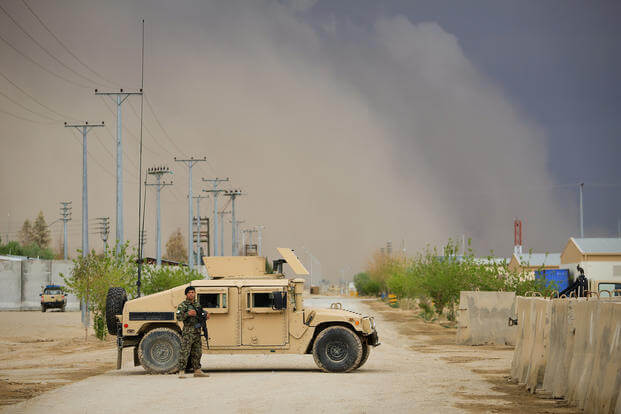Various militaries have given the world plenty of interesting vehicles, but few reach elite status as cultural icons. It’s nearly impossible to think about World War I without remembering Britain’s Mk IV tank; no movie about Vietnam is complete without a UH-1 and “Fortunate Son.” Likewise, the mental picture of American service members in the Middle East will always include a Humvee.
Civilians call it a Hummer. The U.S. military calls it an HMMWV. Service members call it a Humvee, and Motor-T calls it names we can’t repeat in polite company. Whatever you call it, this hardcore truck is one of the most legendary military vehicles of all time.
Supersize the Jeep
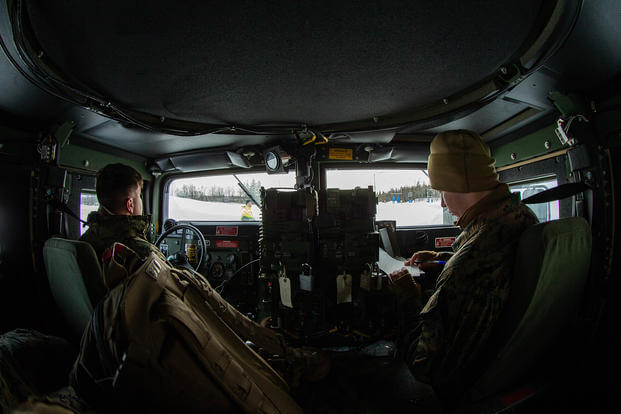
In the early 1980s, the U.S. military had an age problem –- not with its service members, but with its gear. The most powerful military in the world was staring down the Soviet Union with the 1911, a pistol that saw action in World War I, and the M151, a lightweight 4x4 that wasn’t very different from the Willys first used in World War II.
Service members needed a vehicle that could still rumble over rough terrain, but with enough cargo space to carry modern warfighting equipment.
''The increase in size, sophistication, and crew requirements for new communications, weapons, and missile systems strains the load-carrying ability and mobility of the jeep beyond its limits,'' a background paper on the development of the Humvee stated, as reported by The New York Times in 1983.
The High Mobility Multipurpose Wheeled Vehicle, which entered service in 1984 and saw its first action five years later in Panama, bridged the gap between the M151 and the M809 truck, according to The Guardian. Like other heavy equipment, it ran on diesel rather than gasoline.
The early M998 A0 series Humvee came with a 6.2-liter turbocharged V8 that provided a 2,500-pound payload (later models delivered payloads as high as 5,100 pounds). Adding machine gun turrets, low-altitude air defense systems and more modern ambulance cabs became possible, thanks to the broad roof and strong carrying capacity.
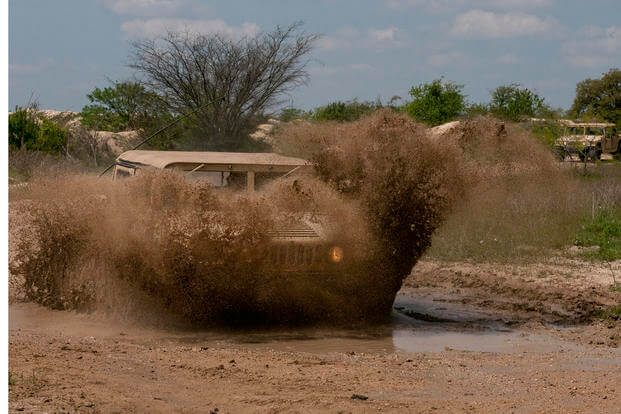
The Humvee was larger and heavier than an M151, but it was even more formidable off-road. Even at just 72 inches tall, it had 16 inches of ground clearance. Portal axles raised the entire drivetrain above the wheel hubs, meaning that drivers had access to maximum ground clearance across the seven-foot width of the vehicle.
Independent front and rear suspension, advanced shock absorbers and torque-biasing differentials allowed the Humvee to get traction on terrain that would stop other four-wheel-drive vehicles in their tracks. The disc brakes were even moved inboard, near the differentials and between the frame rails, for protection.
An aluminum body kept the Humvee’s weight down despite its size. Compared to steel, aluminum allows more body flex off-road and reduces the risk of corrosion, making the Humvee easier to maintain.
The Humvee was a smash hit from the very beginning. It was a dominant off-roader that refused to quit, and civilians couldn't get enough of the way it looked. For two decades, it seemed like nothing could stop the military’s new truck. But as it turned out, the vehicle’s greatest challenge had nothing to do with extreme terrain, but paved city streets.
The Unofficial Vehicle of the War on Terror
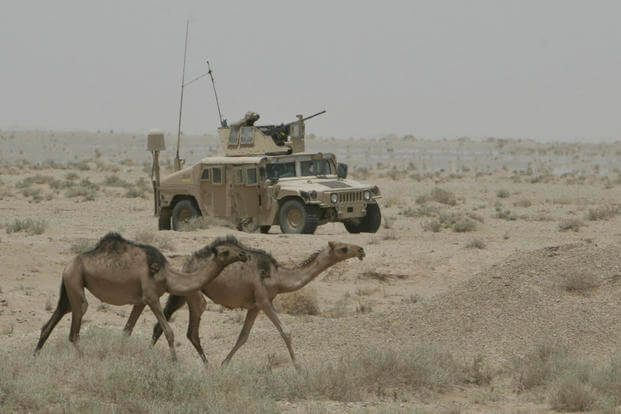
When the U.S. military steamrolled Iraq’s defenses (both times, in 1991 and 2003), the Humvee was in its element. The big bruiser crushed miles of open desert with ease –- not to mention a killer soundtrack.
But after the initial push into Iraq in 2003, the mission changed. The Humvee was no longer responsible for whisking soldiers and Marines across wide expanses of sand; it suddenly became an urban taxi in the world's most dangerous urban neighborhoods. The truck’s aluminum body might as well have been tissue paper in the face of small arms fire. Roadside improvised explosive devices and rocket-propelled grenades turned the vehicle into little more than a rolling coffin.
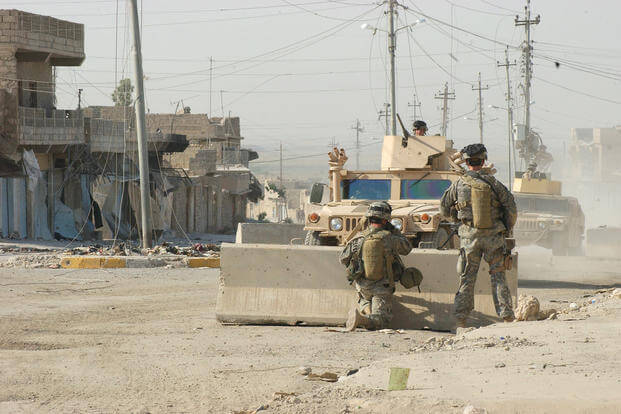
To protect the service members patrolling cities such as Ramadi and Fallujah, the military began retrofitting Humvees with armor and bulletproof windows. This increased protection, but it came at a cost: the immense weight of added armor made the Humvee slow, clumsy and prone to rollovers. Extra strain on the engine, transmission, drivetrain and chassis accelerated wear and brought about a rash of mechanical failures. Worst of all, the armored doors had a tendency to jam and trap service members inside during deadly attacks.
The JLTV Is Bigger and Better
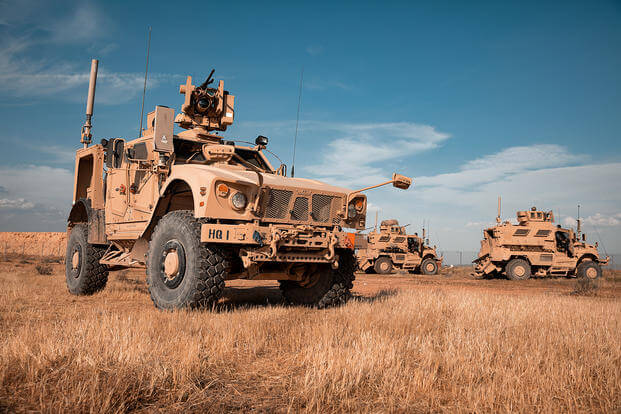
Bolting steel plates to the Humvee was better than doing nothing, but it was only a temporary fix. After only a few years in Iraq and Afghanistan, it was clear to leaders at the Pentagon that the military needed something else.
According to a deep-dive comparison by Motor Trend, the Army and Marine Corps began replacing the Humvee with the Joint Light Tactical Vehicle in 2018. Light is a misleading term, though, since the truck weighs 14,000 pounds.
The JLTV won the job with better armor; a V-shaped, mine-resistant hull; longer suspension travel; locking differentials; and a 400-horsepower turbo diesel engine that leaves the best Humvee motors in its dust.
In 2021, Forbes reported that 10,000 Humvees had been replaced by the JLTV. That replacement process will likely continue into the 2030s due to its scale, its cost and the shifting needs of the military.
The JLTV is better than the Humvee at many things, including the last big fight, but that doesn't mean it will be ideal for the next one. You can bet that the military is going to hang on to a fleet of Humvees as an insurance policy.
Around the World in the HMMWV
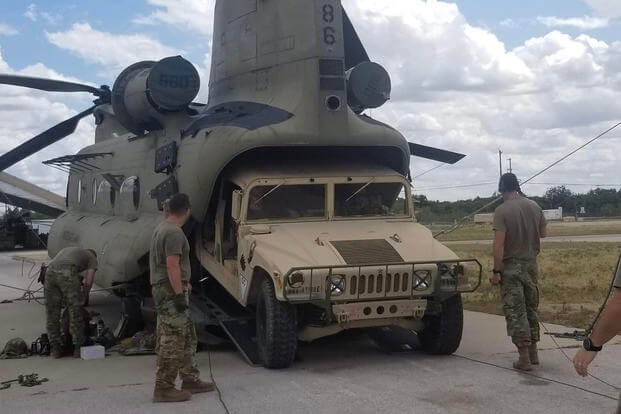
Since the U.S. military announced a switch to the Humvee in 1983, it has covered nearly every patch of dry land on the planet. A search on DVIDS, the military’s media archive, will turn up images and videos that show the Humvee in the U.S., Iraq, Japan, Germany, Kuwait, Afghanistan, South Korea, Australia, Italy, Poland, Spain, Norway and Guam.
The Humvee has conquered mud, sand, rocks, snow and ice. The funny-looking 4x4 has evaded detection in the desert and pulled trailers down the highway. It’s dangled from CH-53s, ridden inside the belly of CH-47s, taken to the seas with Marine Expeditionary Units and jumped entire continents in transport aircraft.
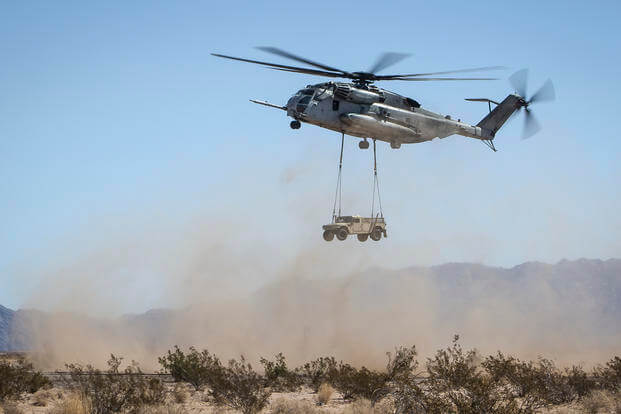
As threats evolved from the anticipated fast-paced movements of the Cold War to insurgencies in Iraq and Afghanistan, the Humvee changed along with it. The truck was a hot-rodded Jeep when the military needed an off-roader, and it was an armored outpost when service members needed shelter.
It’s been more than a decade since the military stopped allowing Humvees outside the wire in combat zones. It’s been five years since the JLTV started replacing the aging platform. And yet, Humvees are still on active duty, reserve, and Guard bases to this day.
The iconic light vehicle is in its sunset years, for sure. But it’s earned a special place in American history.
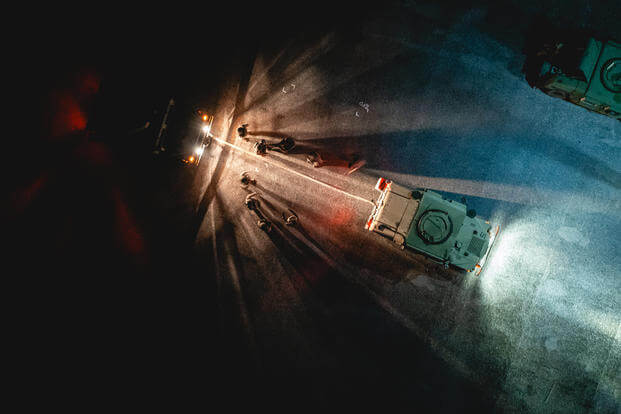
Want to Learn More About Military Life?
Whether you're thinking of joining the military, looking for fitness and basic training tips, or keeping up with military life and benefits, Military.com has you covered. Subscribe to Military.com to have military news, updates and resources delivered directly to your inbox.
